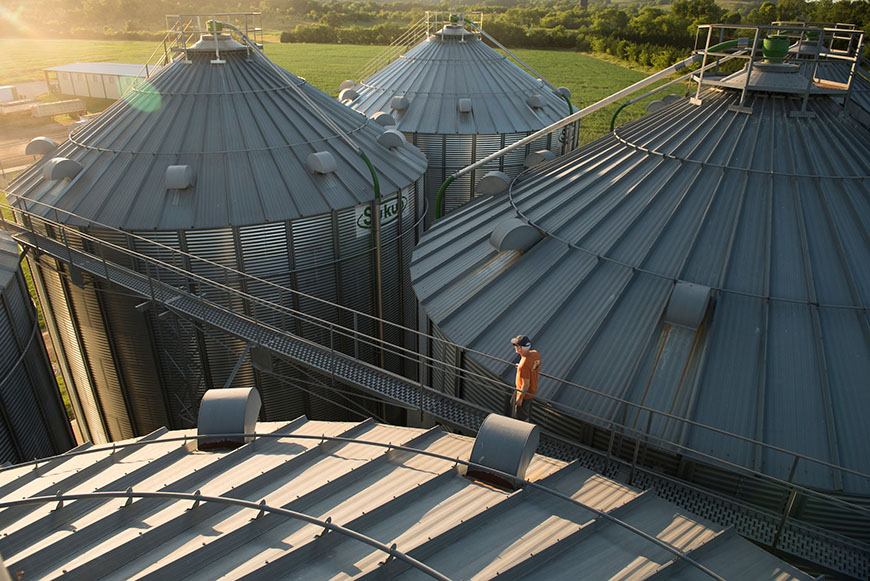Close the Yield Gap With Smart Decisions

How will you define your “wins” this season? Having a solid management plan, capturing your postharvest data and working closely with your trusted local advisor can help close the gap between your yield potential and what you actually pull off the field at harvest. Here are some tips to help you make the right choices at the right times throughout the 2018 growing season.
1. Understand your goals.
For example, if your goal is to increase nitrogen efficiency, you might work with several technology tools to determine optimal application timing. That could mean using the R7® Tool to create variable-rate nitrogen prescriptions for preplant and for side-dress. Then, use tissue testing followed by in-season imagery to see if your crop canopy is trending up and biomass is increasing after the side-dress application.
2. Kiss emotion goodbye.
Use technology to remove emotion from your decision-making. Most of what we make decisions about in agriculture is very emotional: “Do I want to spend $5 or $7?” If you don’t look at true ROI and the net revenue potential of each situation, you’re not going to make good in-season management calls.
3. Stay on top of crop stresses.
Maybe you plant your fields from the northern end of your farm to the southern end. When you return to scout, you might start at the north and move south. But what if your southern crop is being plagued by an early infestation of insects and you should have been there two days earlier to address it? The R7® Field Monitoring Tool can provide you with up-to-date crop information via in-season imagery to help determine what deserves your attention first. This can go a long way toward optimizing the ROI potential of every acre.
4. Apply what’s needed when it’s needed.
A farmer who was using the R7® Field Forecasting Tool, which is designed to help determine optimal timing and rates of nitrogen and potassium applications, was surprised when the tool recommended he add 165 pounds of nitrogen at side-dress instead of his usual 200 pounds. Normally, the farmer applies 2x2 starter and follows it with an early side-dress nitrogen application. The Field Forecasting Tool allowed the farmer and his trusted advisor to project the impact of local weather, account for optimal moisture and growing conditions, and forecast the difference in nitrogen timing for his early-planted corn crop.
Using the Field Forecasting Tool, they were able to run several scenarios and analyze them for optimal ROI potential. The scenario they chose delayed the farmer’s planned application by six days. Technology was used in a way that allowed the farmer to streamline his in-season decision-making process, resulting in a 235-bushel corn crop. The crop model was telling them the corn would benefit more if the application was delayed six more days and lowered to 165 pounds of nitrogen per acre. This meant that the farmer not only applied only what the crop needed; he also saved money on his inputs, increasing profit per bushel.
5. Keep things manageable.
Don’t take everything on in one season. Instead, use one or two tools at a time. Have a strategy, keep it simple and implement with success. At the end of the season, you’ll be in a better position to objectively determine what worked, what needs to be tweaked and what you should consider adding in 2019 as part of a holistic technology strategy.
Technology will help you define what deserves your attention and when, each step of the way. Work with your trusted local advisor now to plan your tech strategy for 2018.
1. Understand your goals.
For example, if your goal is to increase nitrogen efficiency, you might work with several technology tools to determine optimal application timing. That could mean using the R7® Tool to create variable-rate nitrogen prescriptions for preplant and for side-dress. Then, use tissue testing followed by in-season imagery to see if your crop canopy is trending up and biomass is increasing after the side-dress application.
2. Kiss emotion goodbye.
Use technology to remove emotion from your decision-making. Most of what we make decisions about in agriculture is very emotional: “Do I want to spend $5 or $7?” If you don’t look at true ROI and the net revenue potential of each situation, you’re not going to make good in-season management calls.
3. Stay on top of crop stresses.
Maybe you plant your fields from the northern end of your farm to the southern end. When you return to scout, you might start at the north and move south. But what if your southern crop is being plagued by an early infestation of insects and you should have been there two days earlier to address it? The R7® Field Monitoring Tool can provide you with up-to-date crop information via in-season imagery to help determine what deserves your attention first. This can go a long way toward optimizing the ROI potential of every acre.
4. Apply what’s needed when it’s needed.
A farmer who was using the R7® Field Forecasting Tool, which is designed to help determine optimal timing and rates of nitrogen and potassium applications, was surprised when the tool recommended he add 165 pounds of nitrogen at side-dress instead of his usual 200 pounds. Normally, the farmer applies 2x2 starter and follows it with an early side-dress nitrogen application. The Field Forecasting Tool allowed the farmer and his trusted advisor to project the impact of local weather, account for optimal moisture and growing conditions, and forecast the difference in nitrogen timing for his early-planted corn crop.
Using the Field Forecasting Tool, they were able to run several scenarios and analyze them for optimal ROI potential. The scenario they chose delayed the farmer’s planned application by six days. Technology was used in a way that allowed the farmer to streamline his in-season decision-making process, resulting in a 235-bushel corn crop. The crop model was telling them the corn would benefit more if the application was delayed six more days and lowered to 165 pounds of nitrogen per acre. This meant that the farmer not only applied only what the crop needed; he also saved money on his inputs, increasing profit per bushel.
5. Keep things manageable.
Don’t take everything on in one season. Instead, use one or two tools at a time. Have a strategy, keep it simple and implement with success. At the end of the season, you’ll be in a better position to objectively determine what worked, what needs to be tweaked and what you should consider adding in 2019 as part of a holistic technology strategy.
Technology will help you define what deserves your attention and when, each step of the way. Work with your trusted local advisor now to plan your tech strategy for 2018.


